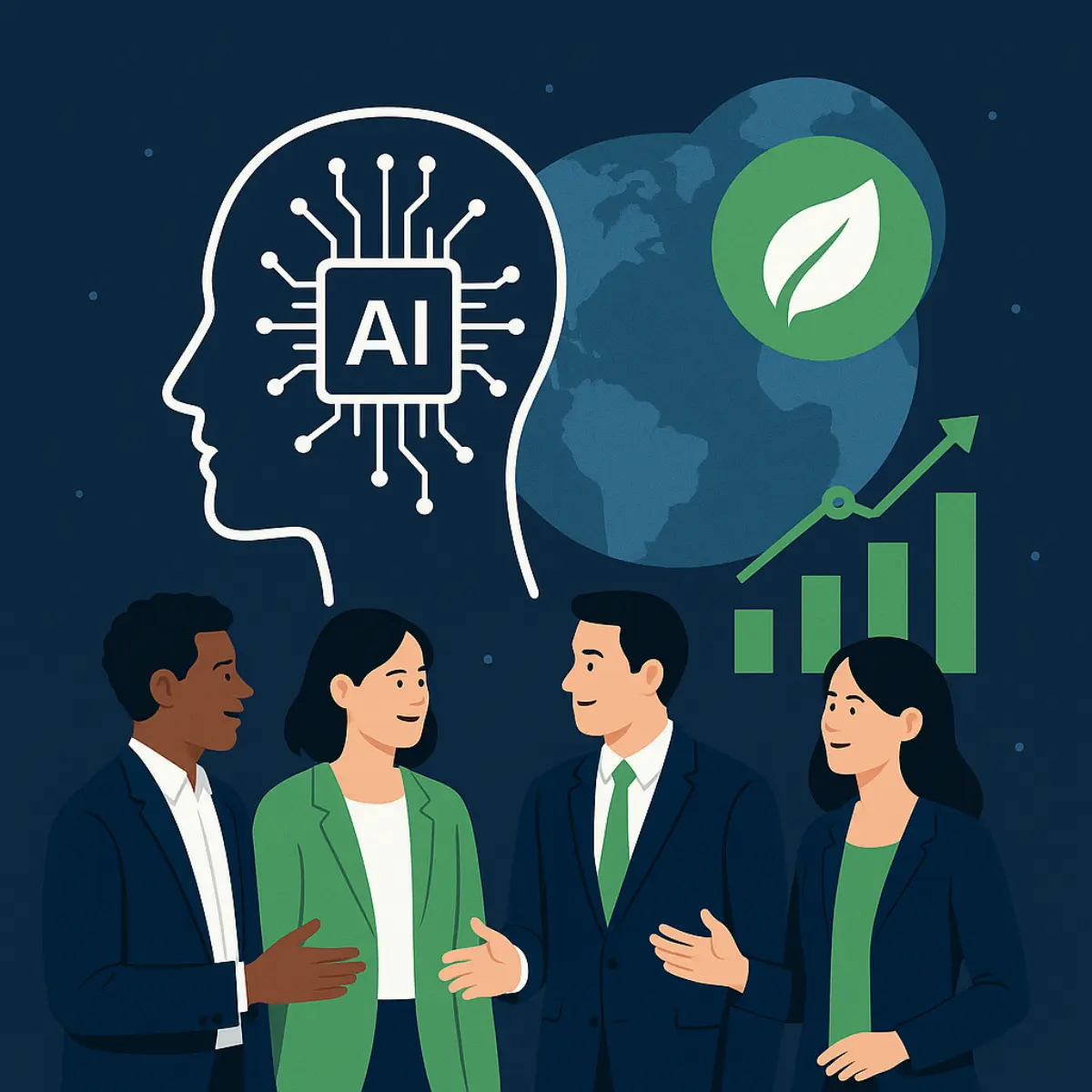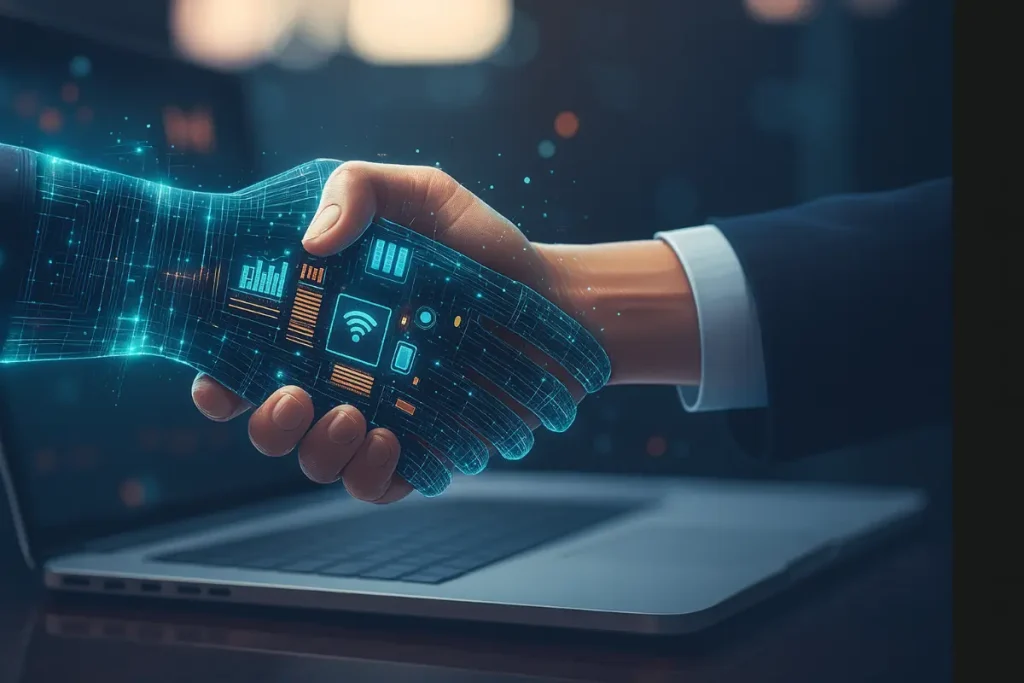Artificial Intelligence (AI) and sustainability reporting belong together. AI helps companies deliver reliable, comparable, and useful disclosures – without drowning teams in manual work.
Remember the EU in 2019: a bold promise in the name of the European Green Deal was made: Europe wants to reach net zero by 2050. What started as an idea from Ursula von der Leyen and her team has now become a mission for the whole continent. Already in 2014, the EU introduced a reporting directive for large companies to report on non-financial issues – the Non-Financial Reporting Directive (NFRD). However, studies showed that the NFRD did not work well.[1] The reports became longer, but they were often not comparable, not reliable, and not relevant enough. In a consultation, 71% of users said the information was not comparable, 60% said it was not reliable, and 57% said it was not relevant.[2] Furthermore, the European Green Deal defines several key sectors to reach net zero by 2050, such as energy, buildings, mobility, and industry.[3] The industrial sector is among the most affected, given its strong interdependence with developments in energy systems, mobility infrastructure, and building efficiency.
Since 2019, many new regulations have come up: the Corporate Sustainability Reporting Directive (CSRD), the European Sustainability Reporting Standards (ESRS), the Carbon Border Adjustment Mechanism (CBAM), the Corporate Sustainability Due Diligence Directive (CSDDD), and many more. In the sustainability community, these acronyms became the daily talking points. Many consultancies began helping companies calculate CO₂ emissions and design decarbonization paths for reaching net zero. For example, steel producers started mapping their emissions from raw materials to logistics. Sustainability consulting business was booming.
But then, in February 2025, everything shifted, with the EU Omnibus Proposal.[4] The industry had pushed hard for less regulation and politicians listened. As a result, the proposal suggests a reduction of reporting efforts, simplifying the double materiality assessment, and removing several voluntary reporting points. At the same time, Europe faced high inflation, unstable energy prices, political unrest, and global conflicts. For a moment, it seemed like the climate agenda had lost its place.
Yet the long-term risk from climate change is far more severe. Countless studies prove the economic damage, such as the IPCC reports[5] or articles in the nature magazine (The economic commitment of climate change;[6] Assessing the costs of historical inaction on climate change[7]). As the report of Energy Innovation[8] puts it: “The longer we wait to reduce emissions, the more quickly the reductions will need to happen.” Short-term relief does not remove long-term reality. Industry therefore needs more than shortcuts. It needs a clear and stable transition plan, proper funding, and strong political commitment instead of constant shifts in regulation.
The big question is: How can we manage all of this in a world of fast-changing rules? Many call for deregulation. But maybe deregulation is not the real issue anymore. What if technology itself could help us master all these challenges? What if digital tools made EU regulations manageable, without cutting the regulations, that help us measure sustainability?
Artificial Intelligence and sustainability reporting: The framework to solve current challenges
This is exactly where an AI framework comes into play. Finding answers to these questions is one of its main goals. The focus lies on two of the biggest challenges of the coming decades: artificial intelligence and sustainability. But how do these two topics connect? And what do they mean for industry and for the future? Let us take a closer look:
(1) Transformation: In the 1970s, Milton Friedman said: “The Social Responsibility of Business Is to Increase Its Profits.”[9] Over time, the more famous line “The business of business is business” became associated with him. Profit and shareholder value were the only goals. But times have changed. Climate risks such as floods, storms, and wildfires now directly affect companies. Sustainability is no longer just PR. It has become part of core strategy.
(2) Technology: AI is changing how companies report. Soon, AI systems will scan Enterprise-Resource-Planning (ERP), Customer Relationship Management (CRM), or Manufacturing Execution System (MES) data, find the right numbers, and create structured reports automatically. Imagine a CFO asking: “How much CO₂ did we emit in Q3?” and having the answer within seconds. What once sounded like science fiction is close to reality. At the same time, sustainability regulations keep changing. Language models can already screen new guidelines and help companies understand them faster.
(3) Transparency: Non-financial reporting is already or will soon be part of the annual management report, checked by auditors similar to financial data. Artificial Intelligence can help by extracting the right information inside the company. But one big problem remains: hallucinations. How can we trust the answers of AI?
(4) The solution is context. Large language models (LLMs) need a framework to give reliable answers. This is what a knowledge graph provides. It connects company data (ERP, CRM, MES) with regulatory requirements (ESRS, EU Taxonomy) and maps them into clear relationships. The artificial intelligence then works on top of this framework, reducing hallucinations and producing precise, consistent, and verifiable results. In short: the knowledge graph brings AI and sustainability reporting together as the bridge between raw data and trustworthy insights.

Artificial Intelligence and sustainability reporting: from burden to advantage
But this is more than just a technical fix. The idea of combining AI and sustainability reporting is not to push sustainability aside. Quite the opposite. The goal is to see regulations not as a burden, but as a strategic advantage. They can help transform business models, make sustainable actions visible, and support the fight against climate change.
Think of this AI system as a partner. Whatever new EU sustainability reporting rules come up, the agent system takes care of them. When directives or thresholds change, the AI automatically updates the knowledge graph, extracts the right company data, and generates the report. This means you, as a decision-maker, can focus on operational excellence with your team, while the AI handles the reporting. Imagine a new EU-Taxonomy update being released and the system adjusting automatically, without a team spending weeks in Excel.
This actually means that a long trend we know since the third industrial revolution continues: reduce monotonous work and free people for meaningful tasks. Employees should focus on productive and inspiring work and not spend hours collecting data from scattered systems and Excel sheets.
Artificial Intelligence does not replace sustainability. It enables it. With knowledge graphs, agents, and simple, repeatable workflows, teams can deliver reliable and comparable disclosures. Used well, AI and sustainability reporting turn regulation into a strategy tool and free people from tedious tasks so they can focus on real change.




